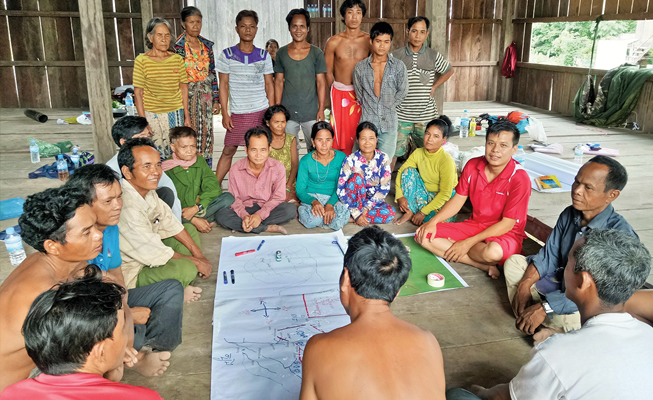Message from the Chairperson
What CEPF and its grantees have accomplished is the provision of ample evidence that strategic, locally driven conservation and sustainable development are effective not only in implementing immediate conservation action, but also in building a thriving local civil society equipped to take conservation into the future.
Results show importance of civil society in conservation and sustainable development
CEPF began making grants to civil society organizations to conserve biodiversity in 2001, as species and the ecosystems that support them were under tremendous strain.
Since then the world has changed a lot in a relatively short time—consider the rise of social media, proliferation of smart phones, adoption of the euro, the “War on Terror,” and the Arab Spring, for a few examples.
And threats to biodiversity and natural ecosystems have continued to grow. The rising human population and its accompanying needs; ever-evolving organized crime and terrorism and their links to poaching; the steady acceleration of climate change: These challenges and more have made the diversity of life on Earth increasingly precarious.
Nonetheless, with optimism and determination, the more than 2,200 CEPF grantees have chipped away at the biodiversity crisis as part of networks of local conservation projects in the world’s biodiversity hotspots, each project contributing to the implementation of larger hotspot strategies that in turn advance global conservation and sustainable development goals. These efforts have been designed to complement the environmental and sustainable development activities of governments and the private sector.

CEPF demonstrates the vital role of civil society, giving individuals, indigenous peoples, communities, nongovernmental organizations and even small business operators the means to conserve biodiversity and promote sustainable development through projects that augment the efforts of other sectors.
CEPF grantees are making a difference
CEPF’s approach to measuring the impact of its grantees has evolved over time. To date, here’s some of what we know:
CEPF-funded projects have benefited more than 1,250 species on the IUCN Red List of Threatened Species.
Projects receiving CEPF support have contributed to the creation or expansion of 14.7 million hectares of protected areas, roughly the size of Nepal, and have strengthened the management of 45.7 million hectares of Key Biodiversity Areas, an area larger than Sweden.
Of the grant funds CEPF has awarded since 2007, 67 percent have gone to local or national organizations working in developing and transitional countries of the biodiversity hotspots. And funding to international organizations is often designed to allow such organizations to mentor and strengthen smaller local and national groups, or to respond to an urgent conservation need that cannot yet be addressed by a local organization.
Reflecting CEPF’s mission to strengthen civil society in the biodiversity hotspots, tools that track organizational capacity of CEPF grantees show that in the eight hotspots where a significant number of the tool scorecards have been completed, grantees report an average increase of 13 percent in capacity during their CEPF-funded projects.
CEPF supported the establishment of 161 networks or partnerships designed to ensure the sustainability of conservation outcomes and strengthen civil society organizations.
Recognizing the importance of helping communities benefit sustainably from their natural ecosystems, CEPF-funded projects have resulted in direct benefits to people. In 2017, CEPF started to record numbers of people receiving cash and non-cash benefits. In the short period since then, CEPF-funded projects have resulted in cash benefits to 42,992 people, and non-cash benefits to 56,265 people, such as increased access to ecosystem services (for example, fresh water) and improved land tenure.
More than 100,000 people have received training through CEPF-funded projects. Training topics have included ecology, plant collection, resource management, GPS, ranger training and financial management.
Biodiversity loss is an enormous issue that must be met with a range of tactics and higher levels of funding. The CEPF model anticipates this, delivering conservation strategies that engage governments and many partner organizations that are also confronting the challenge via their own unique approaches and resources, allowing CEPF’s grantees to complement and coordinate with the work of governments and the private sector.
What CEPF and its grantees have accomplished is the provision of ample evidence that strategic, locally driven conservation and sustainable development are effective not only in implementing immediate conservation action, but also in building a thriving local civil society equipped to take conservation into the future.
Scaling up this model is an essential and cost-effective element of a successful global effort to save our biodiversity and critical ecosystems. CEPF’s grantees have shown themselves to be up to the challenge, and we are proud to support them.
— Julia Marton-Lefèvre, CEPF Donor Council chairperson, executive fellow, School of Forestry and Environmental Studies, Yale University, and former director of IUCN
Photo Credits
Julia Marton-Lefèvre © Julia Marton-Lefèvre
People of Talae Village, Cambodia, participate in land use planning.
© Non Timber Forests Products (NTFP) Organization


